When designing your edible garden with permaculture in mind, you want to consider growing zones around fruit trees that offer understory fruit, as well as pollinator food and nurse plants to support your fruits trees to become established. The space is often relegated to lawn in most back yard gardens, but it can be transformed into a productive food forest with a little forethought. Consider these perennial fruit to fill in the understory near fruit and nut trees and to give you fruit in the shoulder seasons while you are waiting for the fruit on the trees to ripen.’
With perennial fruit and food your backyard can become a reliable edible garden that feeds your family as well as birds, and pollinators.

Haskaps
Haskaps have an important role in the edible garden as one of the first shrubs to blossom in spring, offering nectar to pollinating insects. These edible honeysuckles produce fruit around the time the first strawberries are ripe.The antioxidant rich fruits rival blueberries for their health benefits, without the need for high acid soil.
Developed by the University of Saskatchewan these fruits are hardy to zone 2. You’ll need at least 2 varieties that flower at the same time, to produce fruit — generally referred to as male and female bushes, but both are fruitful. Plant them on 6 to 7 foot centers so you have room to walk around the bush to harvest. The harvest lasts for several weeks while the asparagus is coming into production. Expect strong fruiting about the third year after transplanting.
Raspberries
Another hardy fruit for your edible garden, just a few raspberry canes will fill an area in just a few years, and give you ample fruit for household use. Raspberries have two types of canes a prima cane and a flora cane. On biennial varieties the prima cane comes up in the first season. In the second season the prima cane becomes a flora cane, producing both flowers and berries.
Some varieties produce berries on canes that grow from the ground in the same year. Marketed as “Fall” raspberries, these raspberries have only flora canes. In the case of these raspberries, the first year flora canes can be trimmed back in the second year, to the spot just below the last flowering buds of the year before. These canes will continue fruit in their second year, from the spot on the cane that did not produce flowers and fruit the year before. At the same time, these raspberries will send up new flora canes from their base, potentially giving you two harvests each year.
Raspberries are hardy from zone 2 to 9, however choose your varieties carefully for colder areas, if you do not have a reliable snow cover. “Autumn Bliss” and “Fall Gold” are fall raspberries that are hardy to zone 3.
“Boyne” and “Heritage” are summer raspberries that fruit on second year, flora canes and are hardy to zone 2. They are productive and hardy for the edible garden.
Expand the raspberry bed by transplanting canes in the spring to a new position. A few canes will quickly colonize their new area in just a couple years. If you have more canes than you need, these are easy sales of potted plants in the spring.

Strawberries
Strawberries grown from seed in winter will produce fruit in the first year. But will come into reliable production in their second year. Choose strawberries that produce runners to fill an area and have a reliable source of fruit for your garden for many years. A single strawberry plant will need to be replaced every 4 to 6 years, as they stop flowering. However, this same plant will produce numerous clones via runners in its second to 5th year to replace itself. Use these to fill in the spaces in a strawberry planting or to start a new planting in a different area. If you get more runners than you can use, pot them up and offer them to other gardeners.
There are many varieties that are hardy to zone 3 and since they are low growing, if you are in zone 2 with reliable snow cover, you’ll be fine with strawberries as well. If wild strawberries grow in your area, domestic strawberries are also a good choice.
There are “everbearing” strawberries that produce fruit throughout the summer from June to frost. Other strawberries are spring bearing and tend to slow down about the time your raspberries come into full production. Spring bearing strawberries tend to produce more runners, giving you more choices in expanding your strawberry bed.
You can start strawberries from seed or from crowns. Crowns will produce fruit in their first year, but the flowers should be pinched back in the first year to encourage the plant to put its energy into establishing a strong root system.
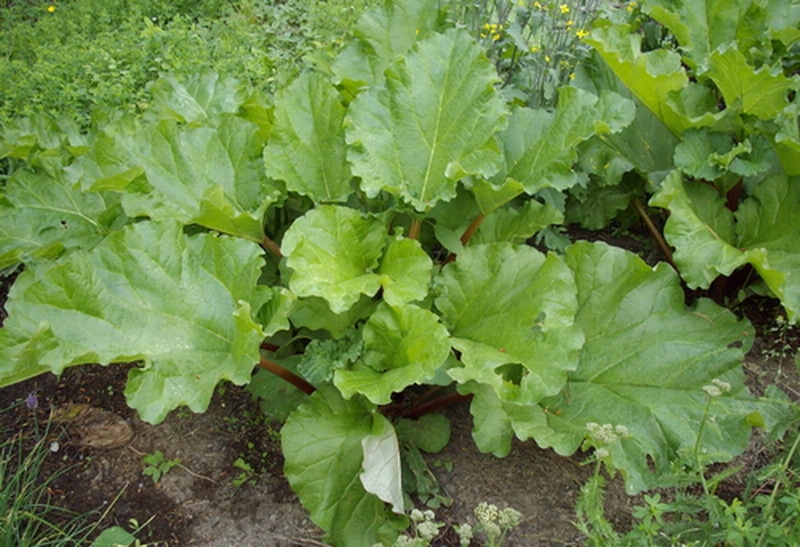
Rhubarb
While not a shrub, rhubarb is a good choice as for your edible garden. Rhubarb is hardy to zone 2 and a prolific producer of tart, nutritious stalks. Used in pies, jams, and beverages, rhubarb is an easy perennial to get established in the permaculture garden. It should be fed with well composted manure in the spring before the first leaves appear.
To expand the bed, rhubarb can be divided in spring or fall by slicing through the root with a sharp spade, and transplanting each piece of root to a new bed. Plant on 4 foot centers to allow ample room for plant development. Mulch the bed well. Rhubarb is a heavy feeder.
With rhubarb the red stalks are the fruit. Rhubarb leaves are high in oxalic acid and make good pest deterrents when laid down in the soil around other plants. Slugs avoid rhubarb leaves. Organic bee keepers in Europe use rhubarb leaves in their hives during honey production to successfully inhibit varoa mites.
A planting of rhubarb will last 20 years or more, and can be expanded by dividing the plants in the spring or fall.
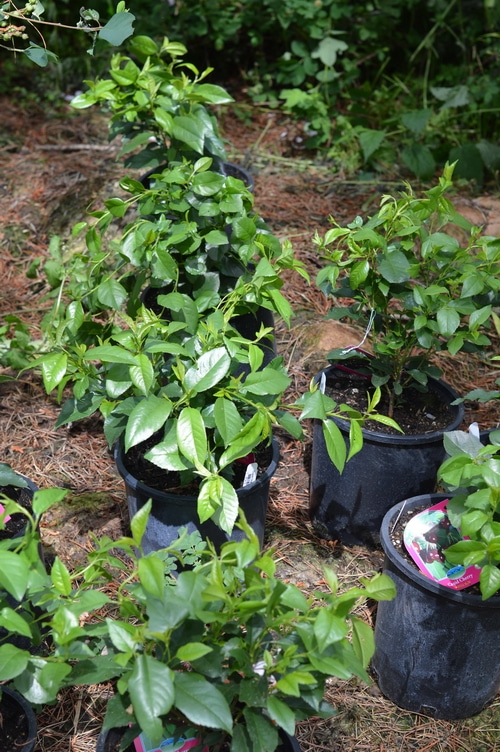
Bush cherries
Bush cherries are self- rooted cherries from the sour cherry family. These dwarf cherries are a cross between Siberian sour cherries and a Mongolian cherry, offering hardiness to zone 2. Another University of Saskatchewan development, bush cherries can be hard to source. Choose several varieties that ripen fruit from mid-summer to fall, for a longer harvest window Look for the romance series with cultivars like “Cupid”, “Romeo”, “Juliet”, “Valentine”, “Carmine Jewel” and “Crimson Passion”. The bushes get only 5 to 6 feet tall, with yields of 20 to 25 pounds per bush. They are a good understory shrub with long fruiting potential.
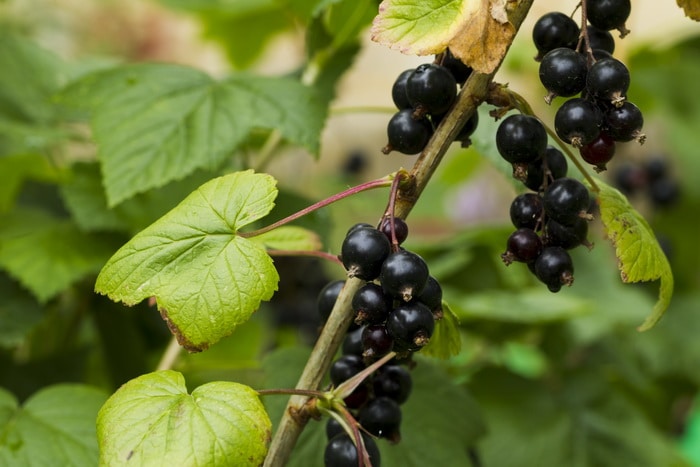
Currants and gooseberries
Black, red, and white currants are hardy to zone 3 to 8. Plant them on 4 foot centers. Expect to get fruit in the 3rd year after planting. A mature currant or goose berry will produce a gallon (about 4 pounds) of fruit annually. Although they are self-fertile you’ll get more fruit if you have more than one variety. There are a lot of things you can do with black currents too.
Hardy in zone 3 to 8, these are good understory shrubs that can produce fruit in part sun, although you’ll get more fruit if you plant this in full sun.
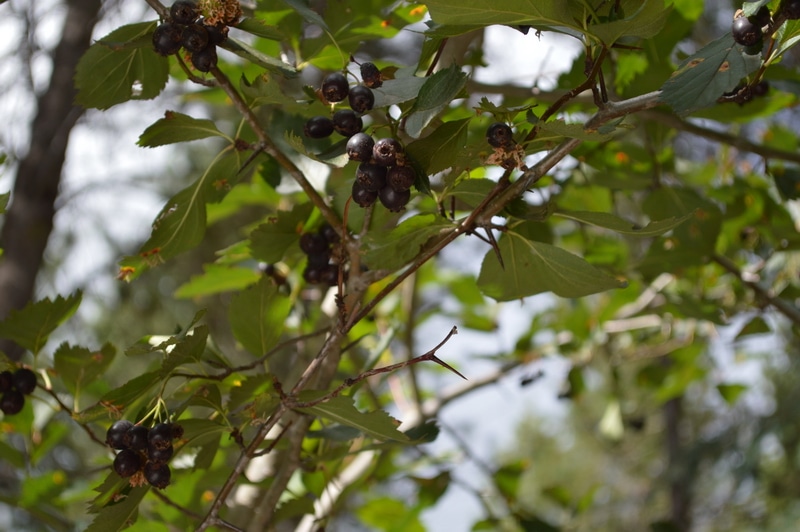
Hawthorn
Hawthorns are shrubs that can grow 8 to 10 feet. They produce a berry that is traditionally used for heart health. Hawthorn berries are good for jams, jellies, and medicine. The hawthorn flowers in May and its fruit ripens around the time that crab apples ripen in your area. Choose native hawthorns for understory planting to provide berries for medicine, fruit, and food for wildlife.
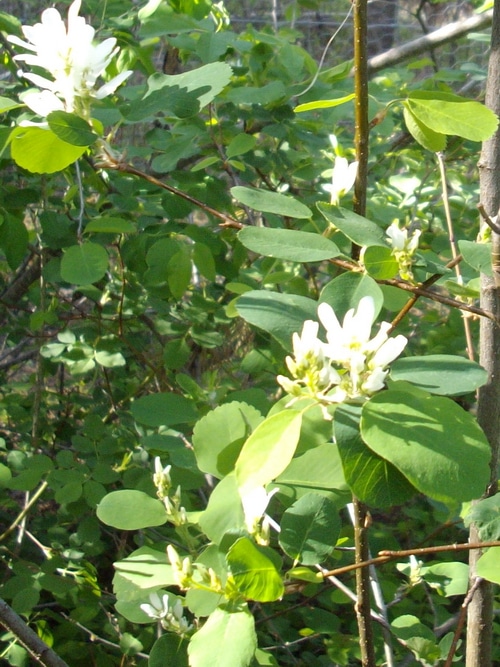
Service Berry or Saskatoon
Saskatoons grow wild in much of Western Canada in zone 3 to 9, but the named cultivars have larger, more desirable fruit characteristics. If service berries are found in the wild near you, they will make a great understory shrub.
Saskatoons are self-fruiting and do not require a pollinator. Plant Saskatoons on five foot centers. Saskatoons begin to bear fruit when three to five years old, produce significant yields at six to eight years and may not produce maximum yields until they reach 12 to 15 years of age.
The fruit, like most small fruits, tastes better cooked and made into jam than when eaten fresh. The flavor is like a cross between an almond and a blue berry.
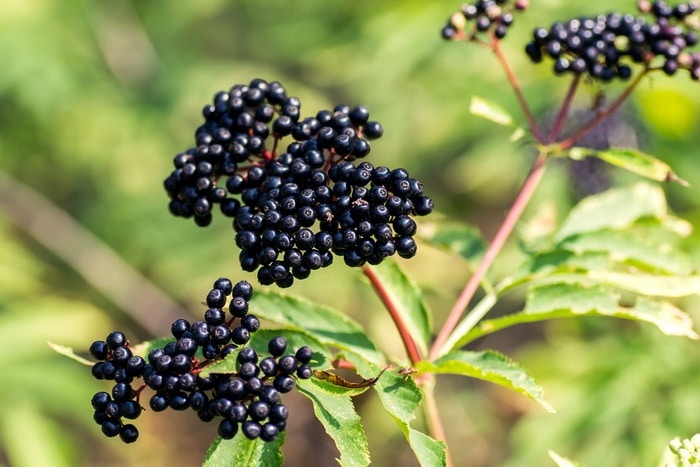
Elderberry
Elderberries are important understory shrubs for your forest garden. The flowers attract beneficial insects and pollinators, with a long blooming season from spring till Fall. The berries ripen slowly and are generally purple to black. Both flowers and fruit are used in herbal medicine as immune support. The berries are also used for wine, juice, jellies, pie, and jam.
Elderberries fruit in the second year after planting and come into full production in year three. They are self-fruitful but you will get a more substantial harvest with at least two bushes in your edible garden. While they can bear in poor soils, elderberries do better in rich soil, with lots of organic matter.
Hardy from zone 3 to 9, they are found throughout the Northern hemisphere. Some named cultivars are used in commercial production. Look for cultivars that are already growing in your area. Some of the commercial cultivars do not ripen fruit in short season areas, even though they are winter hardy in zone 3.

Which perennial fruit will you add to your edible garden?
As you are planning your edible garden, consider adding more berries and perennial fruits to the understory beneath fruit and nut trees, to expand the amount of food your garden provides, provide cover for wild life, and shelter for beneficial insects.


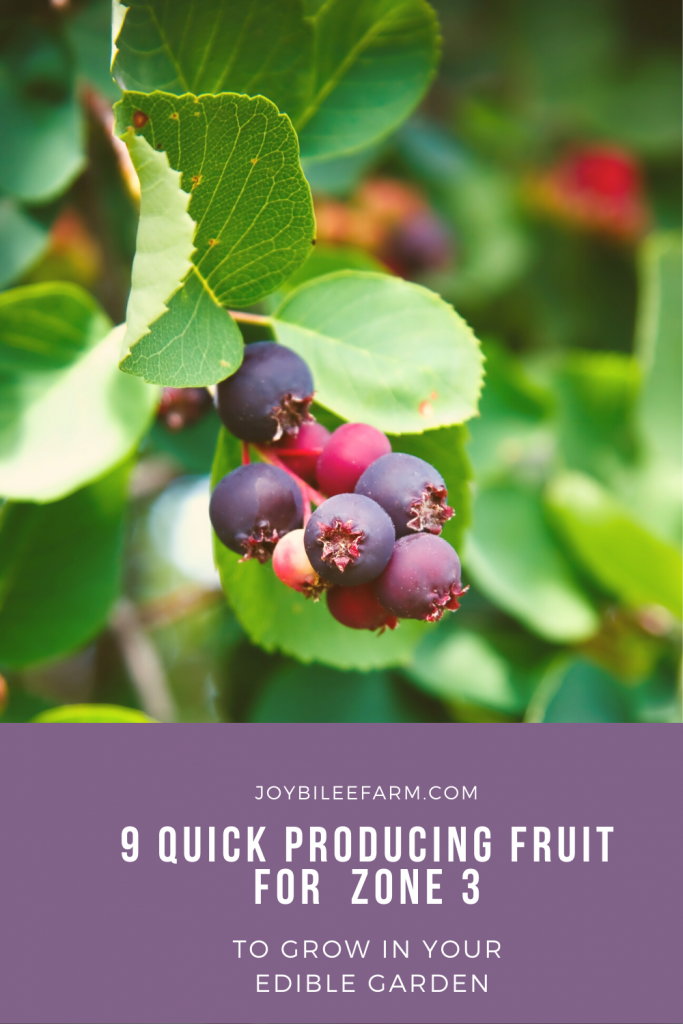
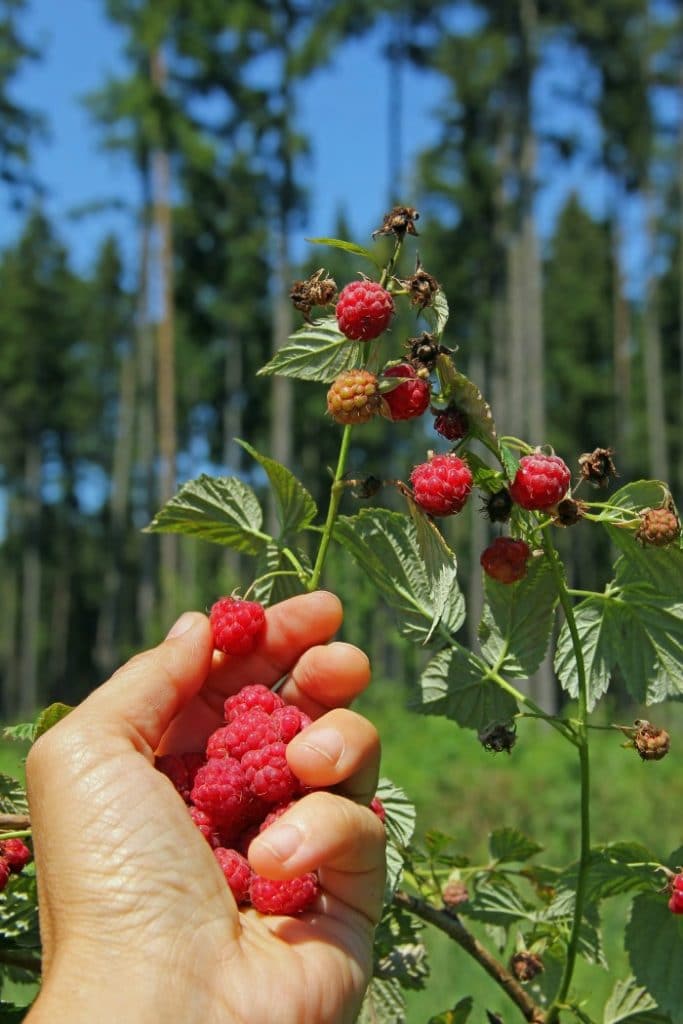

Leave a Reply